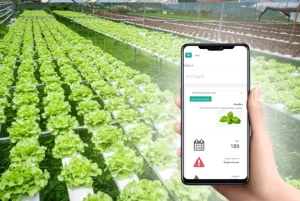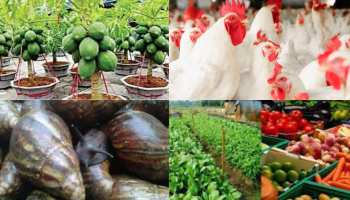Smart farming is currently one of the techniques to increase agricultural production in Nigeria.
An emerging idea known as “smart farming practices” refers to managing farms utilizing Internet of Things (IoT), robotics, drones, and Artificial Intelligence (AI) to improve product quality and quantity while minimizing the need for human labor. With remote sensing, it decreases waste, boosts productivity, and enables management of more resources.
With conventional farming, the farmer must be out in the field all the while keeping an eye on the land and the health of the crops. Yet as farms get bigger and bigger, it’s harder for farmers to keep an eye on everything everywhere all the time. This is especially true for microfarming, where various crops may be grown on numerous isolated parcels of land under exact soil and water management.
By 2032, 10 million farmers across the agricultural value chain will be involved in smart farming through the National Adopted Village for Smart Agriculture (NAVSA), according to the National Information Technology Development Agency (NITDA). However, this feat will only be accomplished with the political will of succeeding governments, according to NITDA.
Why is smart farming so important?
Increase productivity
Nowadays, smart irrigation and control linked to local sensors, together with pH and other environmental factors like local temperature and insolation, can prevent many problems that were formerly handled by “walking the field.” Because farmers have more time to focus on their farms’ real problems, such as using their knowledge to solve pest problems, watering in any location, and modifying soil conditions all through the use of sensing and automation, remote monitoring through smart farming systems enables production yields to increase.

Boost Effective Management
In order to minimize waste, smart farming systems carefully manage demand forecasts and get products to market in good time. It also involves controlling the distribution channel and making sure that the product is transferred to the midmarket handler with efficient and delicate treatment, such as enough refrigeration, to minimize waste. Ultimately, the entire process—from farm to table—is software-managed and sensor-monitored, lowering costs overall, enhancing supply-chain production and quality, and ultimately improving the consumer experience.
Smart Farming system can be utilized in:
Livestock farming: the management and monitoring of livestock utilizing IoT devices and predictive analytics software to monitor their behavior, feeding habits, and overall health.
Crop management: By using IoT sensors and drones, it is possible to monitor the soil’s moisture content, fertility, and characteristics as well as the concentration of pesticides and the temperature. Farm drones may conduct aerial treatment for agricultural diseases, weeds, and pests as well as monitor the health of the soil, evaluate irrigation requirements, and detect pest-caused crop damage.
Green house: Using IoT methods, an agricultural production environment that is automatically regulated can be built. An atmosphere like this lessens the likelihood of predators invading the fields and the effects of the weather, safeguarding the crops at all costs.
Due to its productivity, smart farming is setting the bar in the agricultural industry. You cannot consider the future of agriculture in the nation without considering smart farming given the growing population and rising food demand.






